
table of contents
- Fruit with C
- Vegetables with C
- Other fruits
- frequently asked Questions
Fruits, vegetables and fruits of other plants that start with the letter C hardly anyone can think of. There are numerous options in the large selection.
In a nutshell
- both domestic and exotic plants
- Fruits from other plants can also be used
- Vegetables offer the largest selection
- In terms of variety names, apples have numerous options
- Expanding knowledge can also enrich the menu
Fruit with C
After a little thought, you will soon find something different than for fruits with Y, a fruit with a C. This usually not only looks cheerful, but also tastes delicious:
Camu camu
- Botanical name: Myrciaria dubia
- Type of fruit: berry fruits
- Taste: pleasantly fruity but sour
- Health value: very high vitamin C content, strengthening of the immune system
- Origin: Bolivia, Ecuador, Colombia, Northern Brazil, Peru, Venezuela
- Harvest time: November to March
- Use: fresh, as juice and food additive

Cantaloupe melon
- Botanical name: Cucumis melo var. cantalupensis
- Type of fruit: oval, fluted
- Taste: sweet and fruity
- Health value: low in calories, rich in vitamins and minerals
- Origin: Italy
- Harvest time: around four to six weeks after sowing
- Use: raw in fruit salads, as a side dish or wrapped in ham

Cassis (black currant)
- Botanical name: Ribes nigrum
- Type of fruit: berries
- Taste: sweet and very fruity
- Health value: vitamins, minerals, secondary plant substances
- Origin: France
- Harvest time: June to July
- Uses: raw, juice, liqueurs, fruit salads and jams
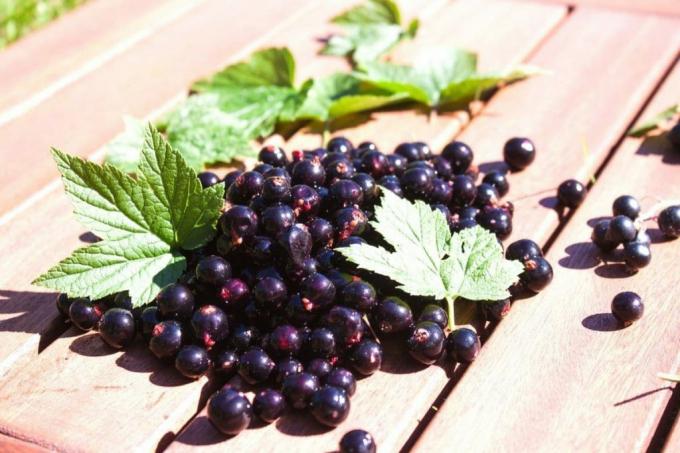
Chirimoya (creamed apple)
- Botanical name: Annona cherimola
- Type of fruit: comparatively hard skin, about the size of a pear
- Taste: the consistency is reminiscent of bananas or pears, is sweet, fruity and creamy
- Health value: rich in vitamins and minerals
- Origin: Andes
- Harvest time: October to February
- Use: spoon raw directly from the shell, do not consume the kernels
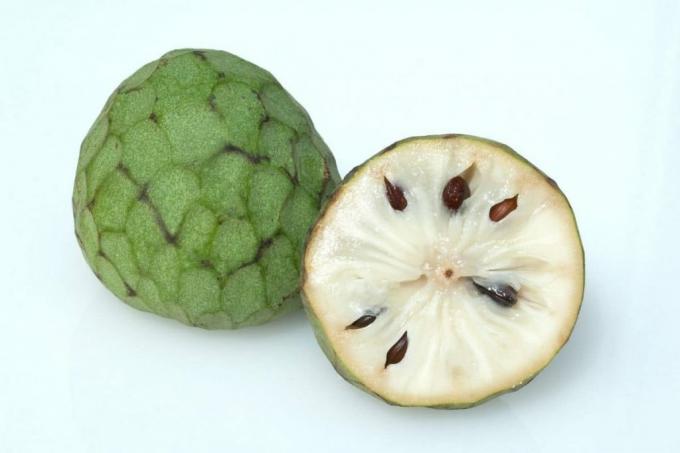
Clementine
- Botanical name: Citrus × clementina
- Type of fruit: rounded with inedible skin
- Taste: sweet, juicy, light citrus taste
- Health value: lots of vitamin C and minerals
- Origin: probably China
- Harvest time: November to January
- Use: fresh and raw in salads or fruit salads, cakes and other desserts

Cox orange apple
- Botanical name: Malus domestica 'Cox's Orange Pippin'
- Type of fruit: apple
- Taste: finely sour, firm pulp
- Health value: vitamins, minerals and fiber
- Origin: England
- Harvest time: September to October
- Use: raw, as applesauce, in fruit salad or as a cake
Note: It is a winter apple that has a long shelf life. Therefore, it can also be used wonderfully as a valuable source of vitamins in winter.

cranberry
- Botanical name: Vaccinium macrocarpon
- Type of fruit: berries
- Taste: sour and tart
- Health value: very high vitamin C content
- Origin: North America
- Harvest time: September to October
- Use: juice, sauce, dried fruit

Vegetables with C
Of course, there are not only fruits that begin with C, but also vegetables. Most of them have already come across Chinese cabbage. And the other vegetables with a C may also look familiar to you:
Cardy (Spanish artichoke)
- Botanical name: Cynara cardunculus
- Type of fruit: reminiscent of small artichokes
- Taste: slightly bitter, similar to asparagus
- Health value: rich in minerals and vitamins
- Origin: Africa
- Harvest time: late summer to autumn
- Use: boil and fry
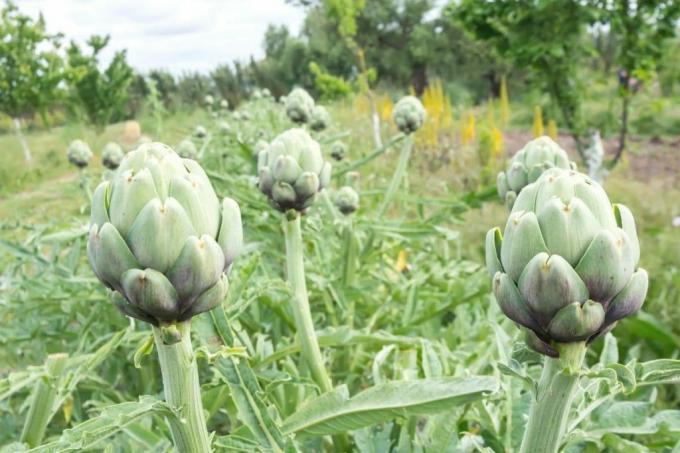
Cassava (manioc)
- Botanical name: Manihot esculenta
- Type of fruit: reminiscent of zucchini
- Taste: neutral to bitter
- Health value: high in calories, high vitamin and mineral values
- Origin: South America
- Harvest time: six to 24 months after sowing, depending on the variety
- Use: poisonous when raw, must be cooked or made into flour
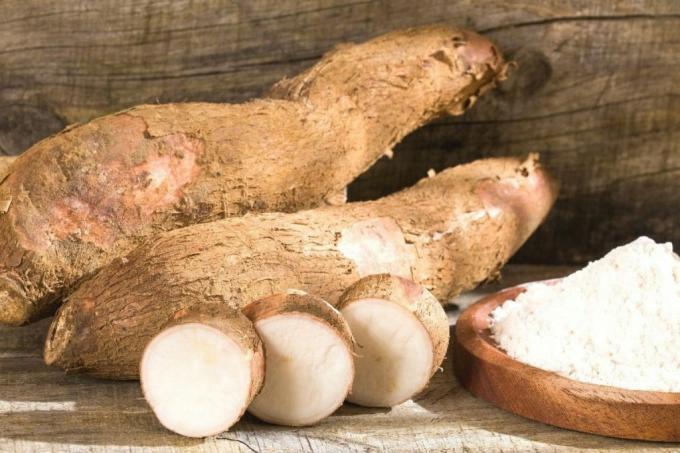
Catalogna (dandelion salad)
- Botanical name: Cichorium endivia
- Type of fruit: leafy vegetables
- Taste: slightly bitter
- Health value: vitamins, minerals, bitter substances
- Origin: Italy
- Harvest time: September to October
- Use: mainly raw as a salad

Chayote (vegetable pear)
- Botanical name: Sechium edule
- Type of fruit: pear-shaped
- Taste: slightly sweet and fresh
- Health value: low in calories and rich in water, numerous minerals and vitamins, amino acids and proteins
- Origin: South America
- Harvest time: from September
- Use: as a side dish, salad, filled and cooked

Cherry tomatoes (cocktail tomatoes)
- Botanical name: Solanum lycopersicum var. cerasiforme
- Type of fruit: round to oval fruit
- Taste: fresh, juicy, slightly sweet
- Health value: rich in vitamins and minerals
- Origin: South and Central America
- Harvest time: from around July
- Use: raw, as a salad, as a side dish, cooked, grilled or steamed
Note: The terms cherry tomatoes and cocktail tomatoes are often used synonymously. However, cocktail tomatoes are actually a bit larger than cherry tomatoes.
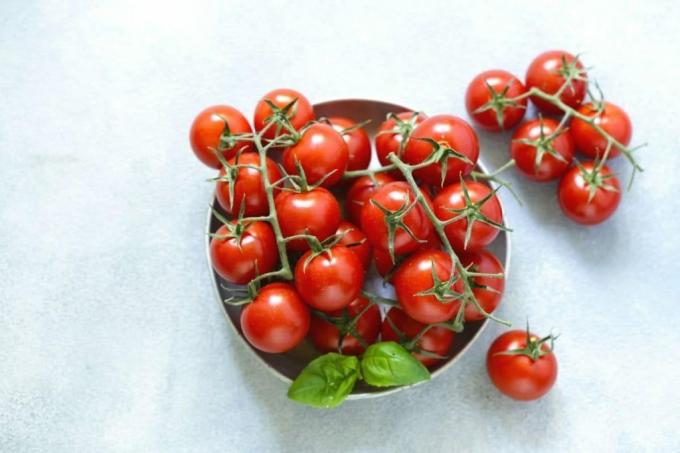
Chicory
- Botanical name: Cichorium intybus var. foliosum
- Type of fruit: nuts
- Taste: slightly bitter
- Health value: low in calories, rich in vitamins and minerals
- Origin: Belgium
- Harvest time: from September
- Use: as raw food and cooked
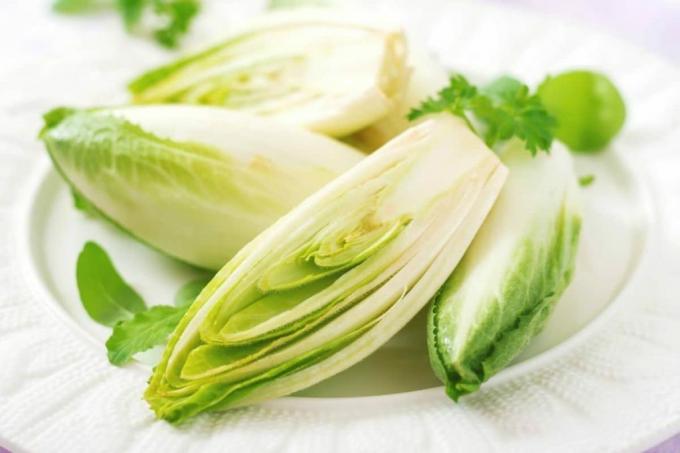
chili
- Botanical name: Capsicum frutescens
- Type of fruit: pod
- Taste: fruity and slightly sweet to spicy
- Health value: rich in vitamins, anti-inflammatory and antibacterial
- Origin: South America
- Harvest time: July to October
- Use: as a spice, fresh or cooked, filled, dried, for joint pain and tension

Chinese cabbage (Japanese cabbage)
- Botanical name: Brassica rapa ssp. pekinensis
- Type of fruit: cabbage
- Taste: fresh, mild and subtle cabbage aroma
- Health value: very rich in vitamins, minerals and fiber
- Origin: China
- Harvest time: August to October
- Use: raw or cooked in soups, salads and as a side dish
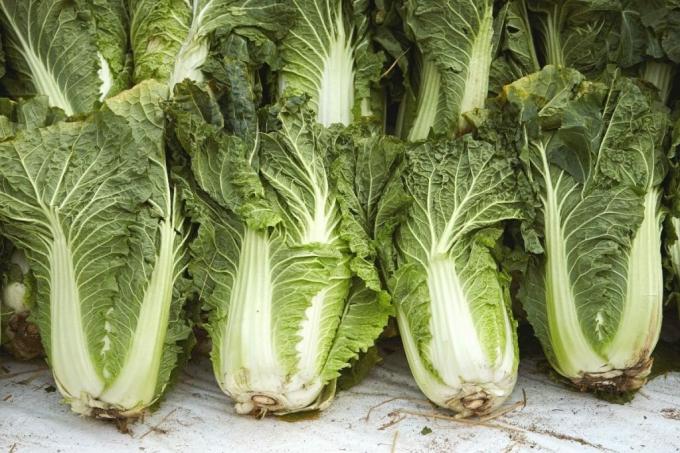
Chinese radish (daikon radish)
- Botanical name: Raphanus sativus longipinnatus
- Type of fruit: turnip
- Taste: slightly sweet with a peppery aftertaste
- Health value: beneficial for the digestive system
- Origin: Asia
- Harvest time: October to December
- Use: as a side dish, sauce or dip
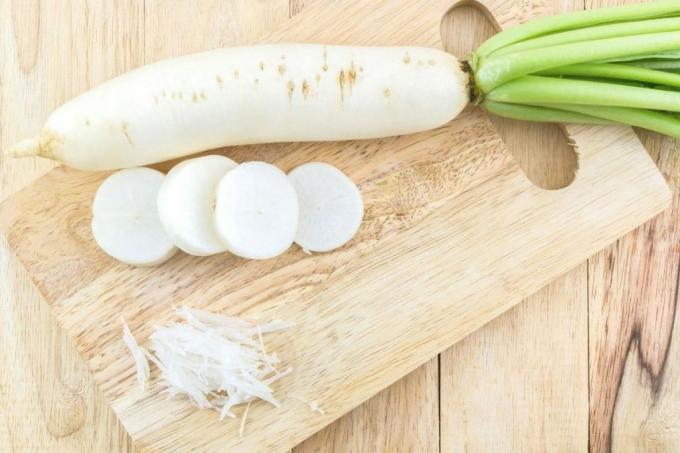
Chinese mustard cabbage (Pak Choi)
- Botanical name: Brassica rapa subsp
- Type of fruit: leafy vegetables
- Taste: mildly spicy
- Health value: rich in vitamins and a lot of fiber
- Origin: Asia
- Harvest time: September to October
- Use: cooked or stewed as a side dish

Chinese spinach (water spinach)
- Botanical name: Amaranthus dubius
- Type of fruit: leafy vegetables
- Taste: mild and fine, slightly reminiscent of artichokes
- Health value: vitamins, minerals, fiber
- Origin: Asia
- Harvest time: six to eight weeks after sowing from spring to autumn
- Use: in soups, salads and Asian dishes
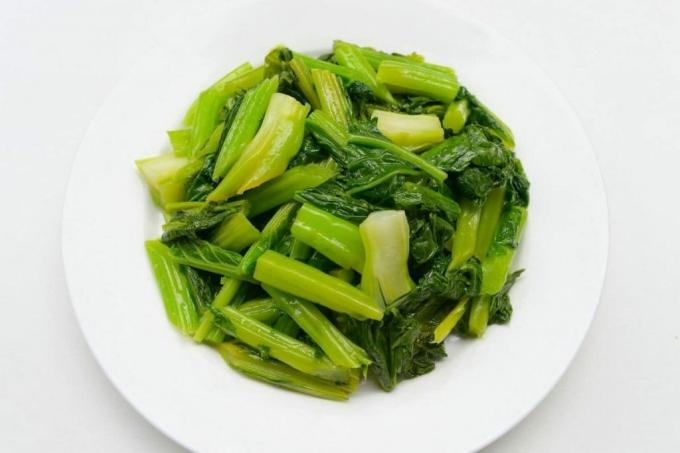
Cimata (volcanic asparagus)
- Botanical name: Cichorium intybus (exact name is pending)
- Type of fruit: leafy vegetables
- Taste: slightly bitter, similar to chicory
- Health value: Vitamins, minerals and bitter substances, should stimulate the appetite and promote digestion
- Origin: Italy
- Harvest time: August to the first frost
- Use: raw as a salad, steamed as a side dish
Note: Cimata is widely used in Italian cuisine. It is also very closely related to chicory.

Crosne (Chinese artichoke)
- Botanical name: Stachys Sieboldii
- Type of fruit: tuber
- Taste: combination of cauliflower, broccoli and artichoke
- Health value: vitamins, minerals and phytochemicals
- Origin: China
- Harvest time: October to January
- Use: as a cooked vegetable
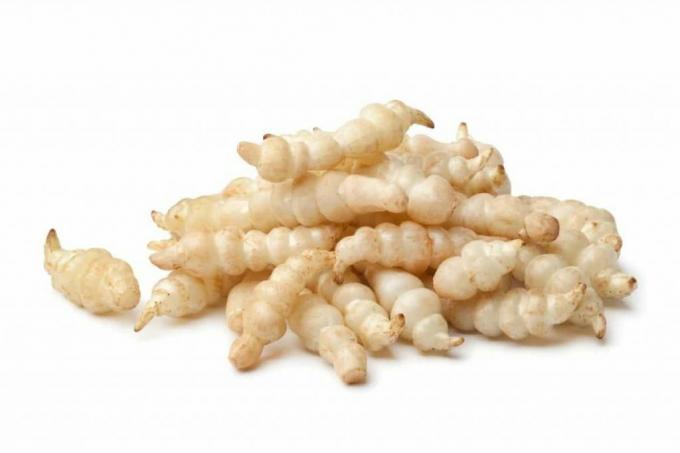
Other fruits
In addition to fruits and vegetables, there are also other fruits that start with the letter C. These are in no way inferior to their predecessors.
Cashews
- Botanical name: Anacardium occidentale
- Type of fruit: nuts
- Taste: slightly sweet, nutty taste, fine aroma
- Health value: B vitamins, minerals and fats
- Origin: Brazil
- Harvest time: January to May
- Use: as a topping in dishes, in baking and as a snack
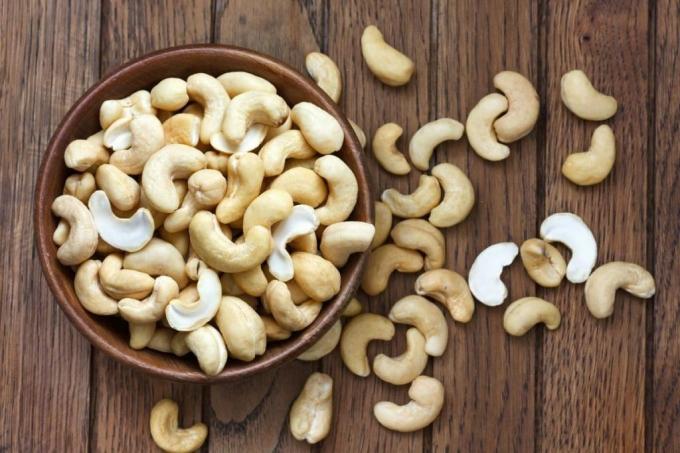
mushroom
- Botanical name: Agaricus
- Type of fruit: mushroom
- Taste: mild to aromatic mushroom
- Health benefits: lots of fiber and protein
- Origin: France
- Harvest time: June to October
- Use: raw, cooked, fried and grilled possible
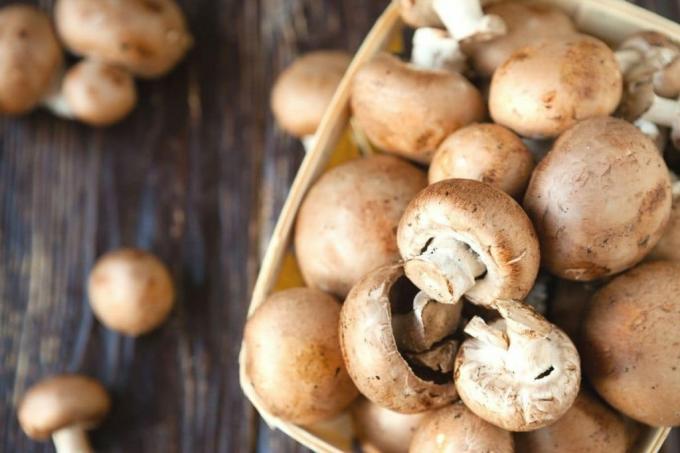
Chia
- Botanical name: Salvia hispanica
- Type of fruit: small seeds
- Taste: slightly nutty and creamy
- Health value: fiber, protein, omega-3 fatty acids
- Origin: South America
- Harvest time: September to November
- Use: versatile in pudding, cakes, smoothies or as an egg substitute for baked goods
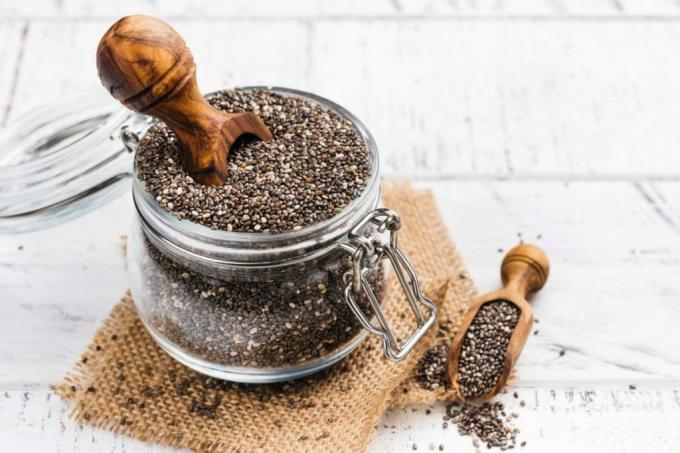
couscous
- Botanical name: Triticum durum
- Type of fruit: seeds
- Taste: mild
- Health value: many B vitamins
- Origin: North Africa
- Harvest time: from July
- Use: like cereals and rice

frequently asked Questions
Because the berries can hardly be enjoyed raw. Dried, on the other hand, as a sweetened juice, sauce or jam, the fruit is very tasty.
The berry fruits are highly valued because of their extremely high vitamin C content. However, they should also have a positive effect on the immune system, increase performance and even strengthen digestion.
It is ideal for Asian dishes and stays crunchy longer. The leafy vegetables, also known as water spinach, can, however, be very bitter after steaming or cooking.
The seeds are high in protein, healthy fatty acids and fiber. Soaked in fruit juice, milk, or other liquids, they turn into a kind of jelly. This means that they can be used, for example, as a binding agent but also as a pudding. They are said to be beneficial for digestion and intestinal health.
If tomatoes are a type of fruit or include vegetables is often discussed. There is no really simple assignment. From a botanical point of view, they are fruit because they grow from flowers and contain seeds. However, based on taste, they are assigned to vegetables.


